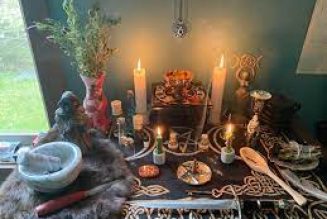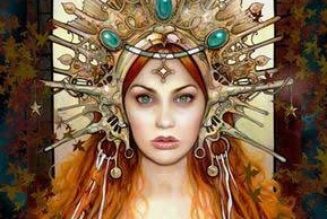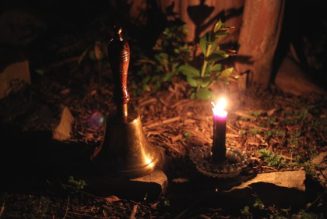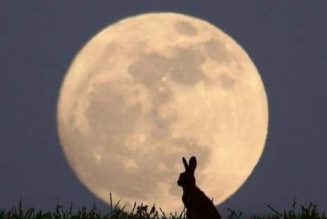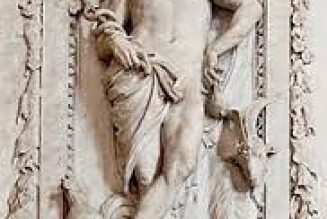If the Moon is feminine in nature, how did we ever come up with the “man in the Moon?”
Even though this idea is often thought of as strictly an American invention, such is not the case.
The Sanskrit word for moon is “mas,” which gives it a masculine form, and etymologists have long debated over whether the same is true of the earliest Teutonic languages.
Be that as it may, the concept of the Moon’s masculinity is rooted in several ancient mythologies.
Khensu, for example, is a Moon-god worshipped by the Egyptians, while Sin belongs to the Baby lonians.
Chandra-a Hindu Moon-god-commandeers a silver chariot drawn by deer with antelopelike antlers as he races across the sky.
And, of course, there’s also Yuelao, Chinese mythology’s Old Man in the Moon, who predetermines the marriages of unsuspecting humans.
It’s said that he firmly binds future mates with an invisible silk thread-a thread so strong that nothing can break it but death.
In other areas of the world, though, the Moon’s gender takes a back seat to the roles She plays: those of sanctuary, savior, and bringer of swift justice.
For example, in Siberia, the residents insist that the figure on the Moon is that of a girl who’s been whisked away from the impending danger of an attacking wolf.
Scandinavians see two children rescued from a mean and hateful father.
His crime? He forced them to carry buckets of water all day.’
One of the most interesting Moon myths belongs to the Masai of Kenya.
They say that the Sun once severely beat His wife, the Moon.
To remind Him of His trespasses-and embarrass Him thoroughly-She consistently shows Her blackened eye and swollen lip to all She encounters.
And then, of course, there’s the legend of the Moon Maiden who collects the dreams and wishes of every living creature on Earth.
It’s said that She tosses these into a silver goblet and spends the night swirling them together before sprinkling them back on the Earth in the form of dew.
In this way, nothing important is ever lost or forgotten.
Like everything else, it only changes form.
Other lunar myths seem to concern themselves more with deities who either live on the Moon, or are in charge of its phases.
One such myth concerns the Germanic goddess Holle-sometimes called Frigg-who lives on the Moon and busies Herself with spinning the lives of humankind.
Another tells of the Chinese goddess Chango, whose husband was given a potion containing the key to immortality.
Wanting the gift for herself, the story goes that Chango stole the potion, sucked down every drop, and then flew to the Moon to escape her husband’s wrath.
It’s said that she now lives there happily with the resident hare who gave her refuge.
Then there’s another bit of folklore that has nothing to do with gender or deity at all.
Instead, it speaks of the ten-day period following the appearance of the Full Moon.
It’s said that each of these days holds a magic all its own, and that those who pay heed to the individual attributes and use them as prescribed below can expect to become very powerful, indeed.

